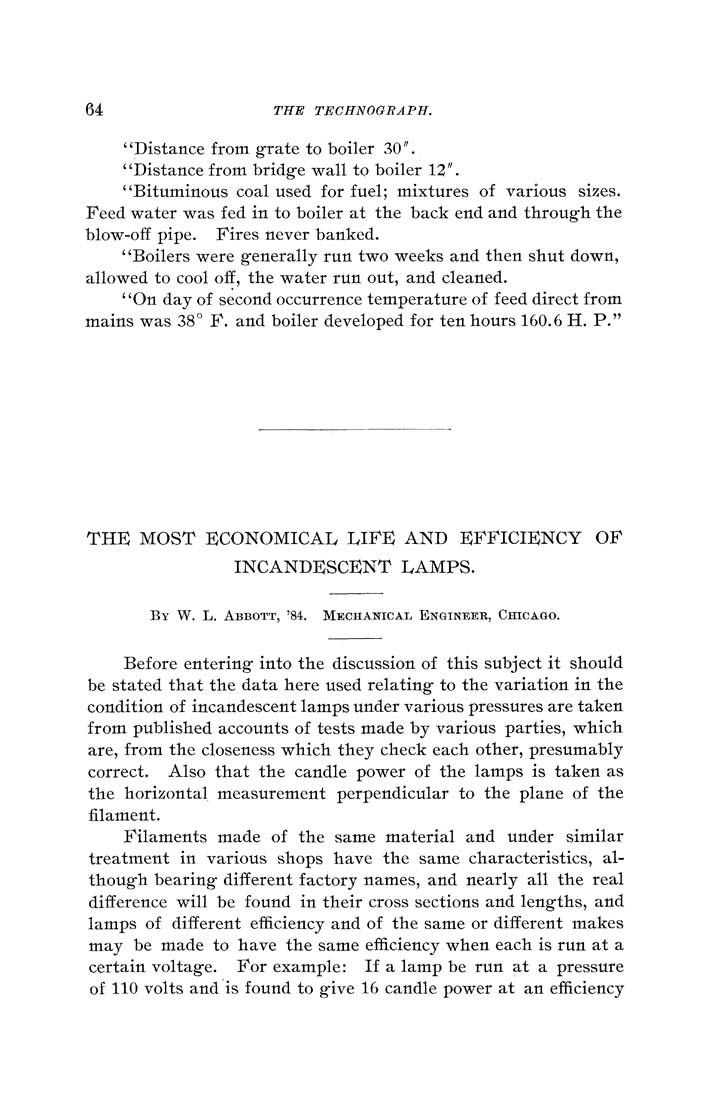64 THE TECHNOGRAPH.
"Distance from grate to boiler 30".
"Distance from bridge wall to boiler 12".
"Bituminous coal used for fuel; mixtures of various sizes.
Feed water was fed in to boiler at the back end and through the
blow-off pipe. Fires never banked.
"Boilers were generally run two weeks and then shut down,
allowed to cool off, the water run out, and cleaned.
"On day of second occurrence temperature of feed direct from
mains was 38° F. and boiler developed for ten hours 160.6 H. P."
THE MOST ECONOMICAL LIFE AND EFFICIENCY OF
INCANDESCENT LAMPS.
By W. L. Abbott, '84. Mechanical Engineer, CmcAGo.
Before entering into the discussion of this subject it should
be stated that the data here used relating to the variation in the
condition of incandescent lamps under various pressures are taken
from published accounts of tests made by various parties, which
are, from the closeness which they check each other, presumably
correct. Also that the candle power of the lamps is taken as
the horizontal measurement perpendicular to the plane of the
filament.
Filaments made of the same material and under similar
treatment in various shops have the same characteristics, al¬
though bearing different factory names, and nearly all the real
difference will be found in their cross sections and lengths, and
lamps of different efficiency and of the same or different makes
may be made to have the same efficiency when each is run at a
certain voltage. For example: If a lamp be run at a pressure
of 110 volts and is found to give 16 candle power at an efficiency
|








